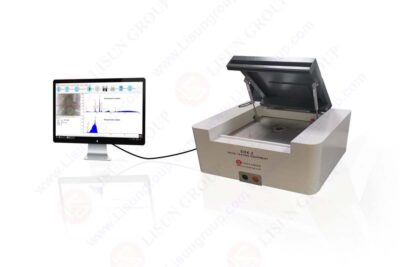
Abstract: XRF fluorescence, or X-ray fluorescence, is a non-destructive analytical technique used to determine the elemental composition of materials. By analyzing the characteristic wavelengths emitted by different elements when exposed to X-rays, instruments like the LISUN EDX-2A RoHS Testing Equipment provide precise and reliable results. This paper delves into the principles, applications, and...

Abstract The XRF machine, an essential tool for non-destructive material analysis, is pivotal in industries ranging from electronics to metallurgy. Among the leading models in this domain, the LISUN EDX-2A RoHS Testing Equipment stands out due to its high accuracy, versatility, and compliance with environmental standards. This paper explores the principles of energy dispersive X-ray fluorescence (...

Abstract This paper explores the use of the LISUN EDX-2A RoHS Testing Equipment in performing elemental analysis on gold samples. EDXRF technology, as employed by the EDX-2A, enables non-destructive testing by analyzing the characteristic X-ray wavelengths emitted by elements present in a sample. By assessing the spectral intensities, this method provides accurate elemental composition and quantif...

Introduction Metal analysis is essential in various industries such as manufacturing, environmental testing, and quality control. One of the most efficient and non-destructive techniques used for metal composition analysis is the Energy Dispersive X-ray Fluorescence (EDXRF) technology. This method is highly valued for its accuracy and ability to analyze a wide range of metal elements. The LISUN ED...

Energy Dispersive X-Ray Fluorescence (EDXRF) spectrometry is a powerful technique used for elemental analysis and RoHS (Restriction of Hazardous Substances) compliance testing. XRF spectrometers are widely used in various industries due to their non-destructive testing capabilities, high sensitivity, and versatility in analyzing a broad range of materials. This paper focuses on the LISUN EDX-2A XR...

X-ray spectrophotometers play a crucial role in material analysis, particularly in the detection and quantification of elemental compositions. These instruments are essential for ensuring compliance with environmental regulations such as the Restriction of Hazardous Substances (RoHS) directive. LISUN’s RoHS Testing Equipment, based on Energy Dispersive X-Ray Fluorescence (EDXRF) technology, is a...

Introduction The EU RoHS 2.0 directive, issued in 2011, is a critical regulation aimed at limiting the use of hazardous substances in electronic and electrical products to protect human health and the environment. To comply with this directive, electronic and electrical products must undergo RoHS 2.0 testing to prove they do not contain six harmful substances: lead (Pb), mercury (Hg), cadmium (Cd)...

What is a Coating Thickness Analyzer? A coating thickness analyzer, also known as a coating thickness gauge, electroplating layer tester, or anti-corrosion layer detector, is an instrument capable of non-destructively measuring the thickness of coatings on various substrates. It can measure non-magnetic coatings (such as aluminum, chromium, copper, enamel, rubber, paint, etc.) on magnetic metal su...

What is a RoHS Tester? A RoHS tester is a specialized device used to ensure compliance with the European Union’s RoHS (Restriction of Hazardous Substances) directive. This directive aims to limit the use of specific hazardous substances in electrical and electronic products. The primary function of a RoHS tester is to measure the levels of the following six hazardous substances in products: ...

The RoHS tester is an instrument used to detect the presence of hazardous substances restricted by the EU RoHS standard, primarily detecting six harmful substances including lead (Pb), cadmium (Cd), mercury (Hg), hexavalent chromium (Cr6+), polybrominated diphenyl ethers (PBDE), and polybrominated biphenyls (PBB). The RoHS tester typically refers to an X-ray fluorescence spectrometer, with an anal...

In today’s society, with the increasing awareness of environmental protection, people’s demands for products have expanded beyond mere functionality and performance to include environmental friendliness and safety. Against this backdrop, RoHS testing equipment, as a device capable of detecting harmful substances in products, is gaining attention and recognition. This article aims to in...

In modern manufacturing, connectors are one of the essential components, widely used in electronic devices, the automotive industry, and communication equipment. To ensure product safety, human health, and environmental protection, the RoHS 2.0 (Restriction of Hazardous Substances) directive imposes strict requirements on material control in the connector industry. This article will provide a deta...